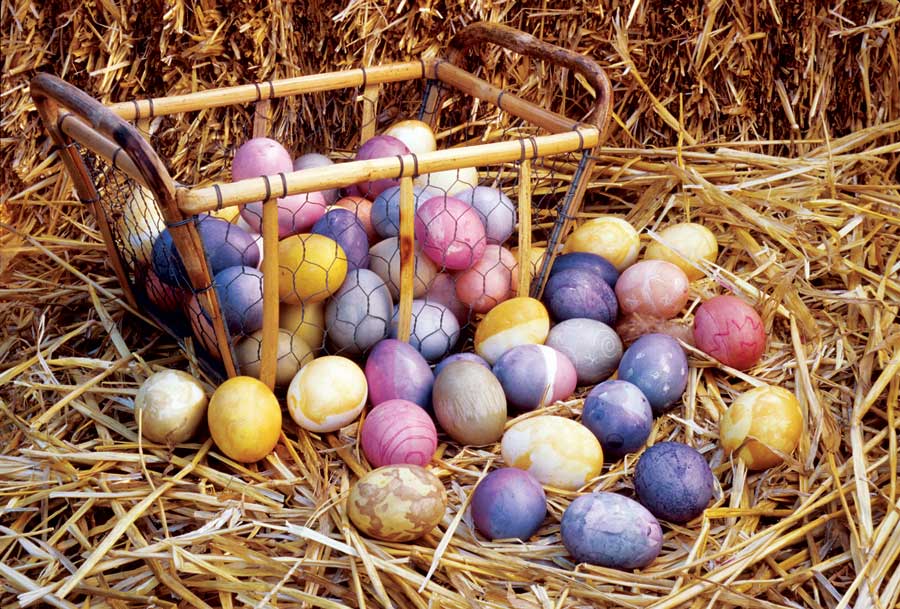DIY Guide to Natural Easter Egg Dye and Garden Imprints

With Easter fast approaching I have been skimming my favorite blogs and sites to come up with some good DIY natural Easter egg dye recipes for this Sunday. I figure this will be the perfect year to practice considering the bubs will be 8 months around this time next year and hopefully by then I will be a pro. I was pleasantly surprised to find that there are some really easy recipes whose ingredients are probably already in your refrigerator and decorating stencils you can pull straight from your garden.
All Natural Easter Egg Dye: Good HouseKeeping
Tip: Make sure to keep all the colors in separate containers
Pink: 1 medium beet, chopped + 2 c. water + 2 Tbsp. white vinegar
Place all ingredients in medium pot; bring to a boil. Let simmer 30 minutes, or until water turns deep red. Cool to room temperature, remove beet chunks, and pour liquid into a mason jar. Leave a hard-cooked egg in the dye for a few minutes to a few hours, depending upon the color desired.
Blue: 1/4 head red cabbage, chopped + 4 c. water + 2 Tbsp. white vinegar
In medium pot, heat ingredients until water boils; simmer 25 minutes. Cool to room temperature, strain, and pour dye into two small jars. Leave a hard-cooked egg in the dye overnight for a royal blue.
Yellow: 1 c. carrot tops, chopped + 2 c. water + 2 Tbsp. white vinegar
Heat ingredients in small pot until boiling. Let simmer 15 minutes; strain. Leave egg in dye overnight.
All Natural Easter Egg Dye: Better Homes and Garden
Green: Peel the skin from 6 red onions and simmer in 2 cups water for 15 minutes; strain. Add 3 tsp. white vinegar.
Orange: Take the skin of 6 yellow onions and simmer in 2 cups water for 15 minutes; strain. Add 3 tsp. white vinegar.
Brown: Add 1 tablespoon vinegar to 1 cup strong coffee.
Lavender: Mix 1 cup grape juice and 1 tablespoon vinegar.
Garden Imprints: Oregon Live






I just saw a recipe for dye-free eggs on weelicious.com, but this is so much easier. Thanks so much! Miss you!
Miss you too honey!